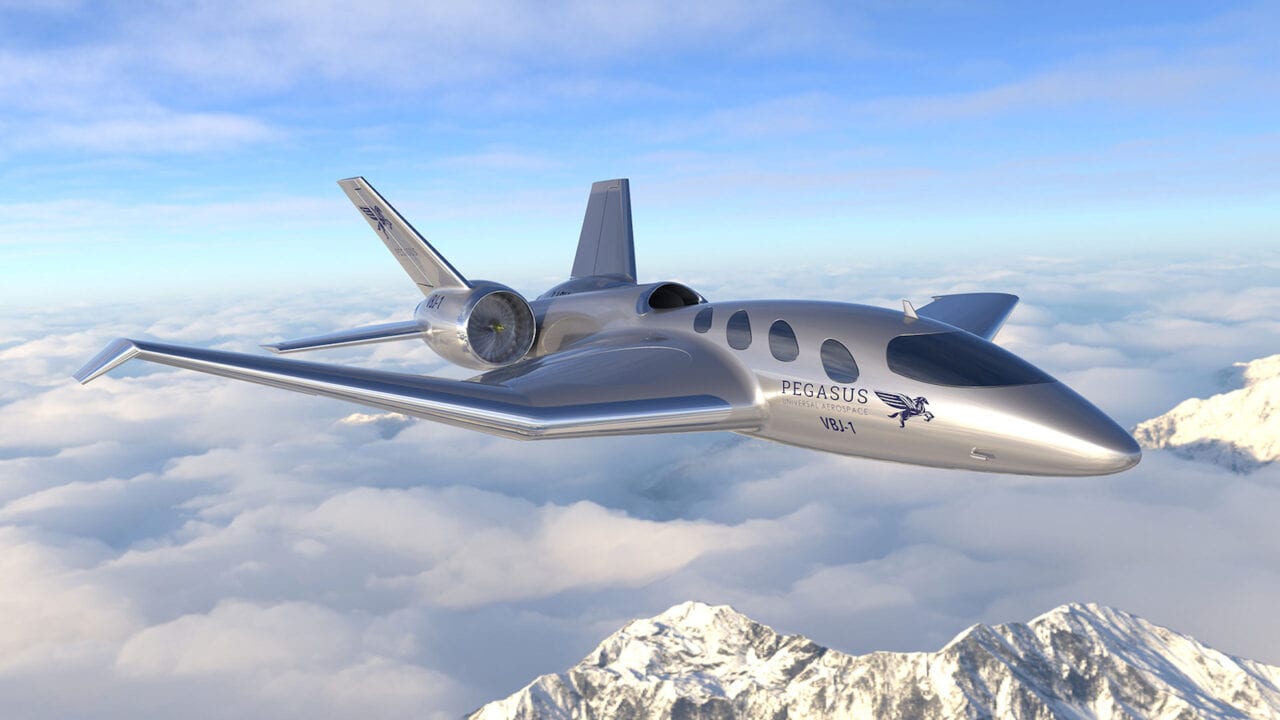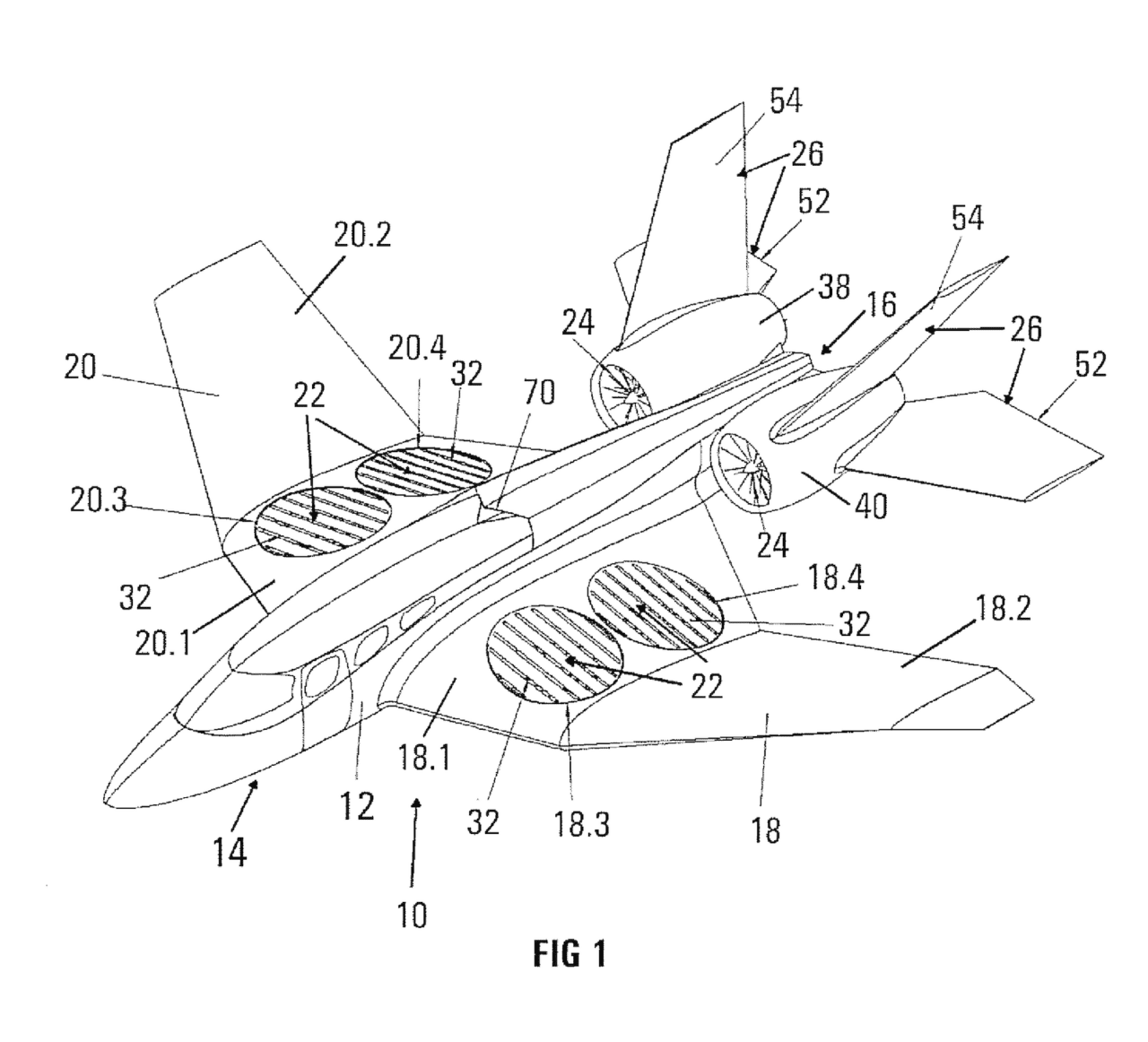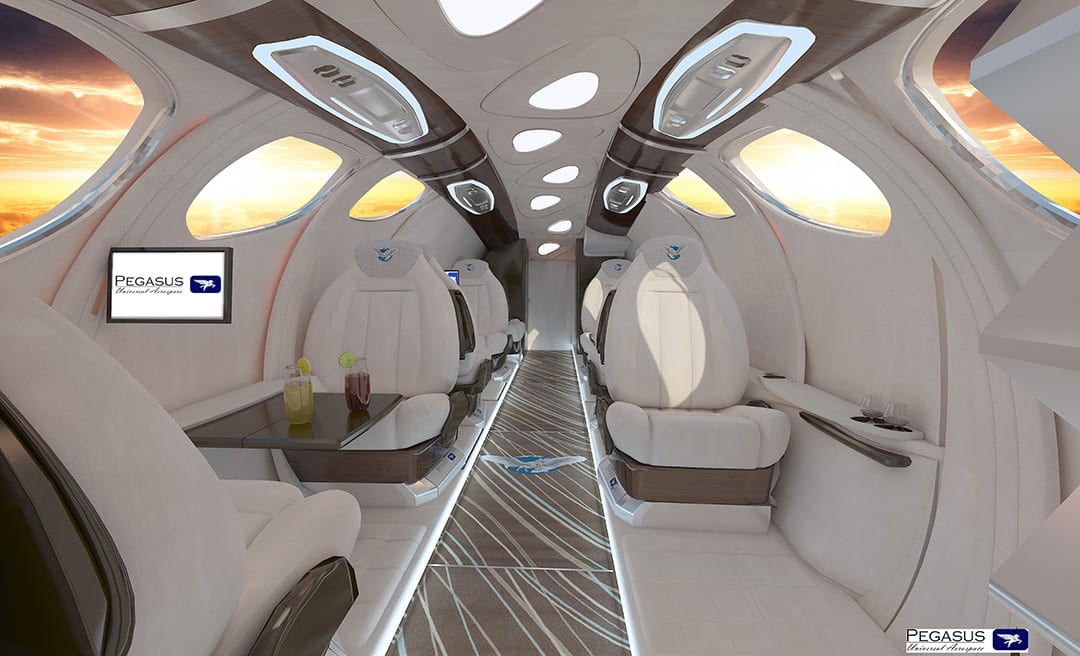
Pegasus Aerospace is developing a business jet with vertical takeoff and landing (VTOL) capabilities in South Africa. (Pegasus Aerospace)
Pegasus Universal Aerospace is advancing development of its next-generation vertical takeoff and landing business jet at its Johannesburg-based South Africa facility, where the company’s founders hope to disrupt the global private air travel and specialized missions aircraft market within the next decade.
The vertical business jet (VBJ) under development by Pegasus made its first major public debut at the 2019 European Business Aviation Conference and Exhibition (EBACE) with a scaled model and limited information about their future development plans. Now, with a newly granted U.S. patent and a hover test achieved in their hangar, Pegasus making progress toward achieving its goal of introducing a regional business jet with helicopter-like takeoff and landing capabilities.
Dr. Reza Mia, founder and chairman of Pegasus Universal Aerospace told Aviation Today in an emailed statement.
Reza is part of a team that includes a chief engineer, Matthew Buttle with former experience at Airbus and Boeing and head of flight operations, Andrew Dietrich, with more than 16,000 hours of commercial airline flying. Their VBJ is being developed to carry up to nine passengers at a cruising speed of 430 knots with a range of 4,400 km (2,375 nm) or up to six hours.
A key differentiator for their VBJ is its ability to takeoff land anywhere, including helipads, yachts and small regional airports as the first configuration envisioned by Pegasus is for the private aircraft market. According to the patent granted to Pegasus in July, the aircraft is to be equipped with a fuselage that accommodates a tilt-rotor design with a tilt-rotor movable between a vertical position providing lift for vertical takeoff, and forward position providing forward thrust attached to the end of each wing.
Their patent cites similar aircraft concepts and technologies from Airbus Defense, Boeing, XTI Aircraft, and Sikorsky among other well-known aerospace OEMs as examples of the type of flying their aircraft will perform. In their patent, Pegasus cites two specific configurations of the VBJ including one that is similar to the U.S. military’s Osprey and the other closer in configuration to the British Military’s AV8 Harrier fighter jet.

In July, Pegasus obtained a patent from the U.S. Patent and Trademark Office for their new VBJ.
Mia said the VBJ’s flight control system will be fly-by-wire and support the vertical takeoff and transition to forward flight necessary in the new design.
“The control system will resemble a regular business jet control system and will transition automatically based on the speed selected on the throttle lever by the pilot,” Mia said.
None of the louvers, fans, ducts, or control surfaces are under the direct control of the pilot, according to Mia. “These are controlled by the proprietary control system to which the pilot interfaces by directing the motion of the airplane. Here we have partnered with Callen Lenz of the UK on an exclusive basis. The airplane should be easy to operate for fixed-wing license holders.”
Their initial entry into the market will focus on private aviation, where Mia said they have already begun thinking about the cabin experience.
“The VBJ will feature high-speed Internet amongst other features. We have engaged with Amazon and signed a memorandum of understanding to explore various aspects of collaboration including one area of interest in the form of project Kuiper, their satellite program. Of course, the cabin will include a restroom and the usual high-quality amenities that business jet customers have become accustomed to,” Mia said.
Although the VBJ is being developed in Johannesburg, Mia said the primary target market for Pegasus is the U.S. Other operations outside of business aviation that Pegasus believes their VBJ could see demand within include oil and platform operators, air taxis, sea rescue, and air ambulance operations.

A computer generated image showing what the future interior of the Pegasus VBJ will look like. (Pegasus Aerospace)
“We are currently building a full-scale hover demonstrator and possibly two quarter-scale models as well. Flight testing and certification are for a future portion of the project and will take a mixed path including Part 23, rotorcraft, and powered lift standards,” Mia said.
There was also one inquiry received by the company about aerial support for sea rescue operations, according to Robbie Irons, CEO of Pegasus. During a video interview published to their website following the September hover flight of their 1/8th scale model VBJ, Irons discussed how real the hover test was despite the small size in nature of the aircraft being flight tested.
“It’s very real, aerodynamics, always comes into play as we scale up, so we’ll learn a lot more as we progress,” Irons said.
According to Irons, the majority of their company’s engineering work right now is focused on computational fluid dynamics. They’re currently working on two quarter-scale models of the VBJ, that are on track to be completed and ready for testing by December.
Irons said the company is also seeking funding to enable local production of their VBJ in South Africa. However, those plans could change in the near future.
“We’ve been to the highest levels in government, on numerous occasions various ministers to the highest level of the presidency to establish what their level of appetite is to support this program going forward,” Irons said. “It all comes down to funding, we’d like to have it here but we’re getting enticed abroad at this time so we have to look at all various aspects.”